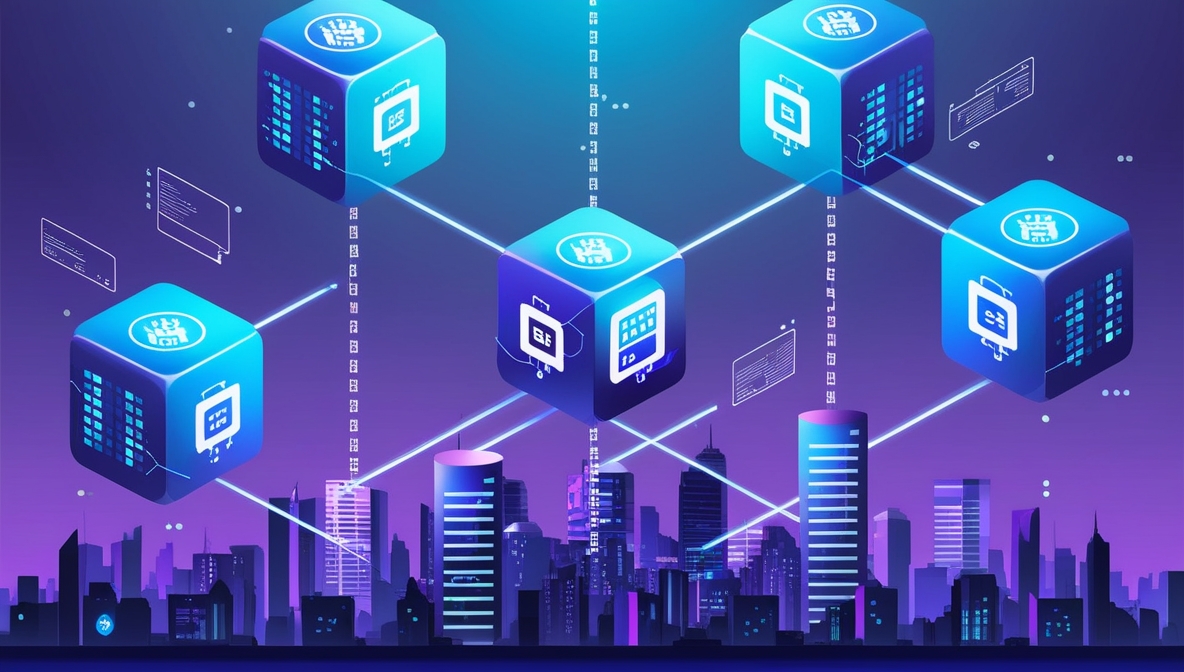The Future of Finance: How EVM-Compatible Chains are Revolutionizing DeFi
In the rapidly evolving landscape of decentralized finance (DeFi), EVM-compatible chains are emerging as powerful catalysts for innovation and growth. These blockchain networks, which leverage the Ethereum Virtual Machine (EVM), are reshaping the financial ecosystem and paving the way for a more inclusive, efficient, and interconnected future.
The Rise of EVM-Compatible Chains
EVM compatibility has become a cornerstone of blockchain interoperability, allowing developers to seamlessly deploy smart contracts across multiple networks. This technological breakthrough has opened up new possibilities for DeFi applications, enabling them to tap into a wider user base and leverage the unique strengths of different blockchains.
Some of the most prominent EVM-compatible chains include:
- Ethereum: The original EVM blockchain
- Binance Smart Chain (BSC): Known for its high speed and low fees
- Polygon: Offering scalability solutions for Ethereum
- Avalanche: Focusing on high throughput and quick finality
- Tron: Popular for its entertainment and gaming applications
Revolutionizing DeFi Through Interoperability
The advent of EVM-compatible chains has sparked a revolution in the DeFi sector, bringing about several key advantages:
Enhanced Liquidity
By allowing assets and protocols to move freely between different blockchains, EVM compatibility has significantly increased liquidity across the DeFi ecosystem. This improved liquidity enables more efficient trading, lending, and borrowing activities.
Reduced Costs
Many EVM-compatible chains offer lower transaction fees compared to Ethereum, making DeFi services more accessible to a broader audience. This cost reduction is crucial for the mass adoption of decentralized financial services.
Scalability Solutions
As the DeFi sector grows, scalability becomes increasingly important. EVM-compatible chains like Polygon and Avalanche provide solutions to handle higher transaction volumes, ensuring that DeFi applications can operate smoothly even as user numbers surge.
Innovation Acceleration
The ability to easily port Ethereum-based smart contracts to other chains has accelerated innovation in the DeFi space. Developers can quickly launch their applications on multiple networks, reaching diverse user bases and experimenting with new features.
The Future of DeFi on EVM-Compatible Chains
As we look ahead, several trends are shaping the future of DeFi on EVM-compatible chains:
Cross-Chain Interoperability
The focus is shifting towards creating seamless bridges between different EVM-compatible networks, allowing for effortless asset transfers and cross-chain liquidity.
Layer 2 Solutions
Many EVM-compatible chains are implementing layer 2 scaling solutions to further improve transaction speeds and reduce costs, making DeFi even more accessible.
Perpetual LP Pools
These innovative liquidity provision mechanisms are gaining traction, offering new ways for users to earn yields and participate in DeFi markets.
Intent-Based Architecture
This emerging paradigm aims to simplify user interactions with DeFi protocols, potentially lowering barriers to entry for newcomers.
Challenges and Considerations
While EVM-compatible chains offer numerous benefits, they also present challenges:
Security Concerns
As the ecosystem expands, ensuring robust security across multiple chains becomes increasingly complex. Developers and users must remain vigilant against potential vulnerabilities.
Regulatory Landscape
The rapid growth of DeFi on various chains has attracted regulatory attention. Navigating the evolving regulatory environment will be crucial for the long-term success of these platforms.
User Education
With the proliferation of EVM-compatible chains, educating users about the nuances of different networks and their associated risks becomes paramount.
Conclusion
As EVM-compatible chains continue to evolve, they are set to play a pivotal role in shaping the future of decentralized finance. By fostering innovation, enhancing interoperability, and addressing scalability concerns, these networks are laying the groundwork for a more inclusive and efficient financial system. The journey ahead promises exciting developments as the DeFi ecosystem matures and expands across multiple blockchains, potentially revolutionizing how we interact with financial services in the digital age.





